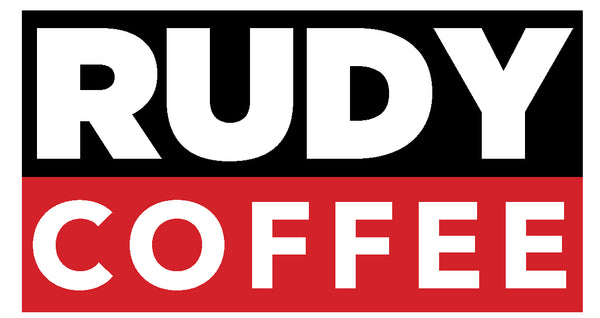Rudy Coffee Brewing Tips
The information below will help you brew the prefect cup of coffee, no matter what coffee brewing method you prefer.
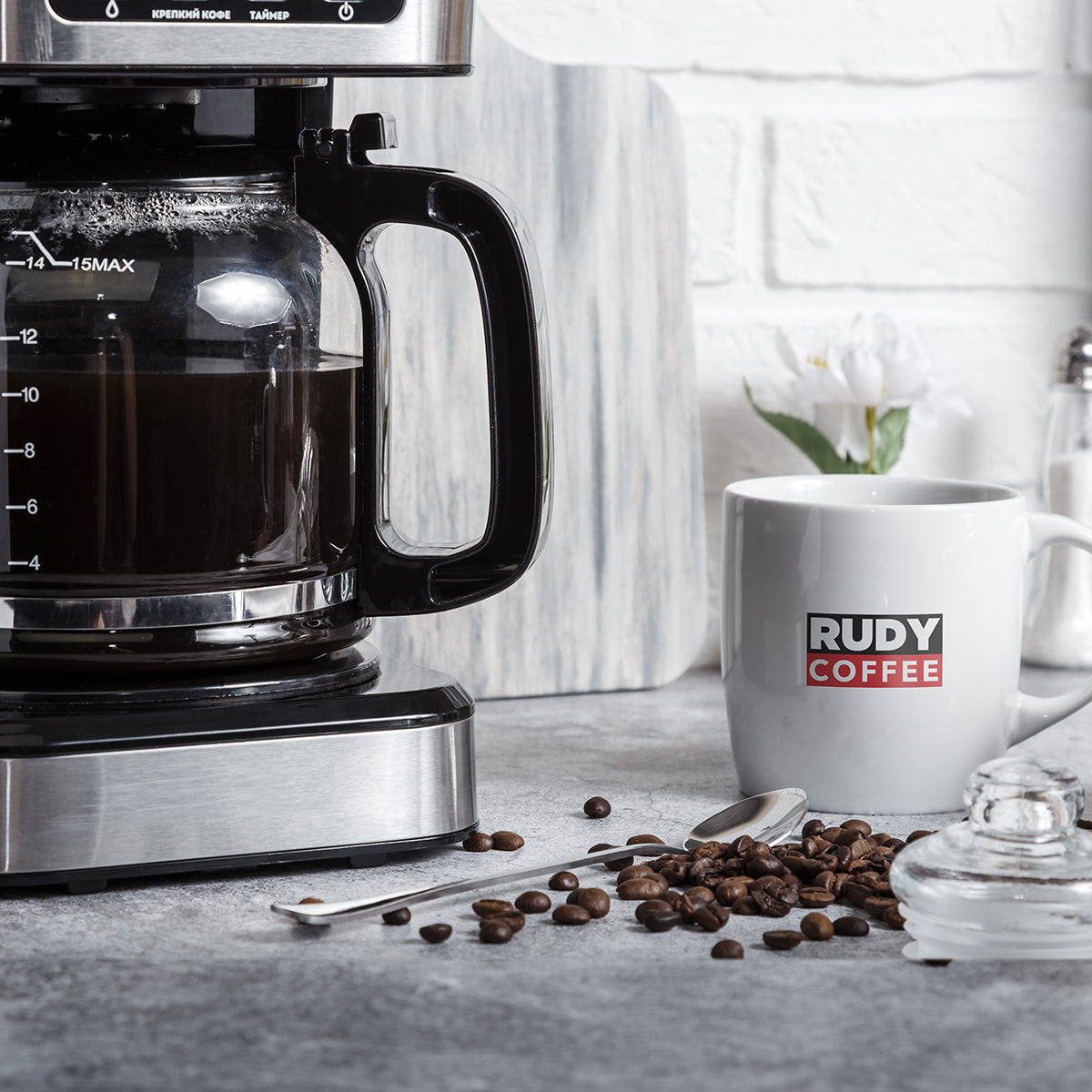
Drip Brewer
Add one level to slightly rounded measuring tablespoon (10g) of finely ground coffee (fine granular sand, not yet a powder) to each six ounce cup of water. (177ml)
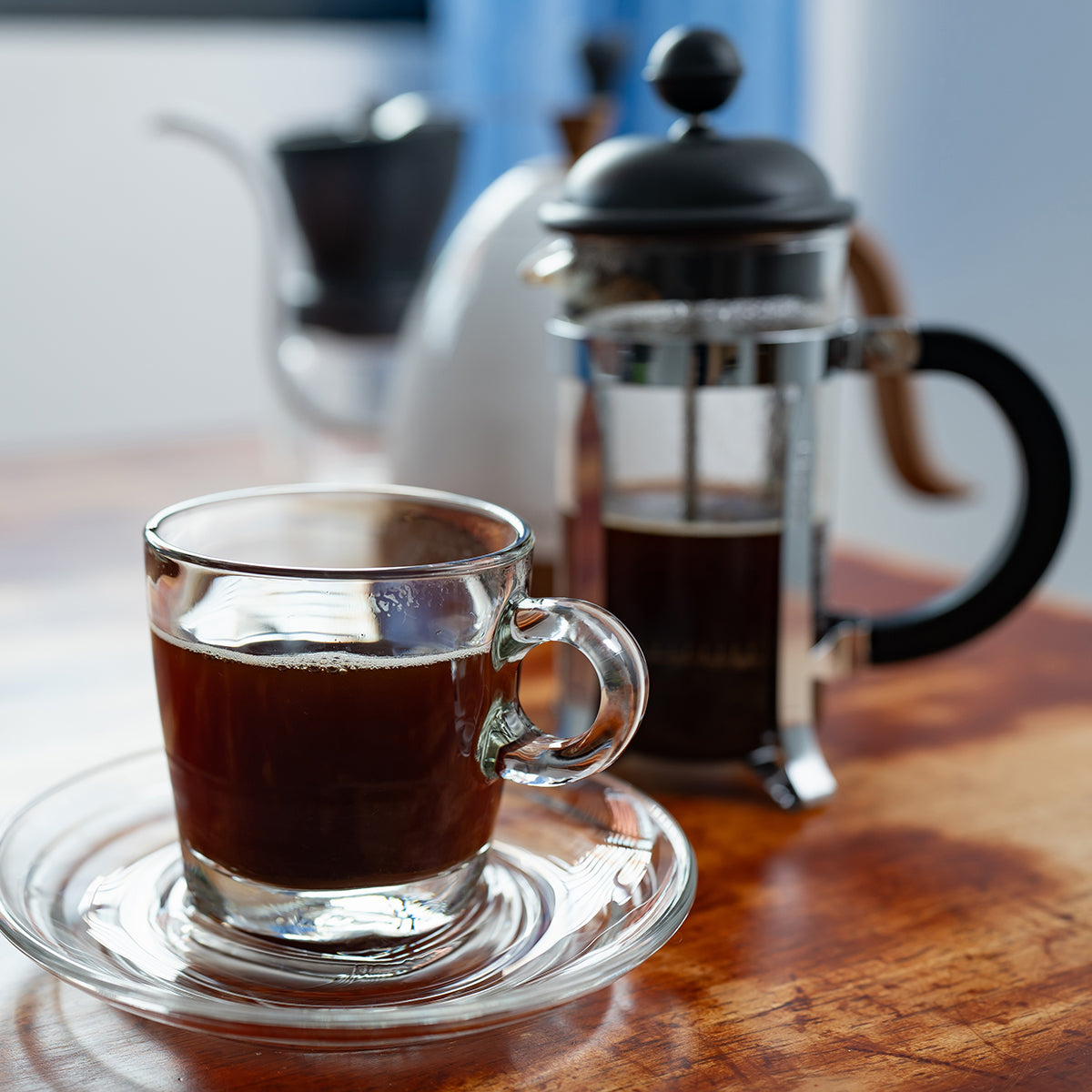
French Press
Add 1-2 measuring tablespoons (10-20g) of coarse ground coffee per cup (177ml) of water and adjust to taste. Never add boiling water.
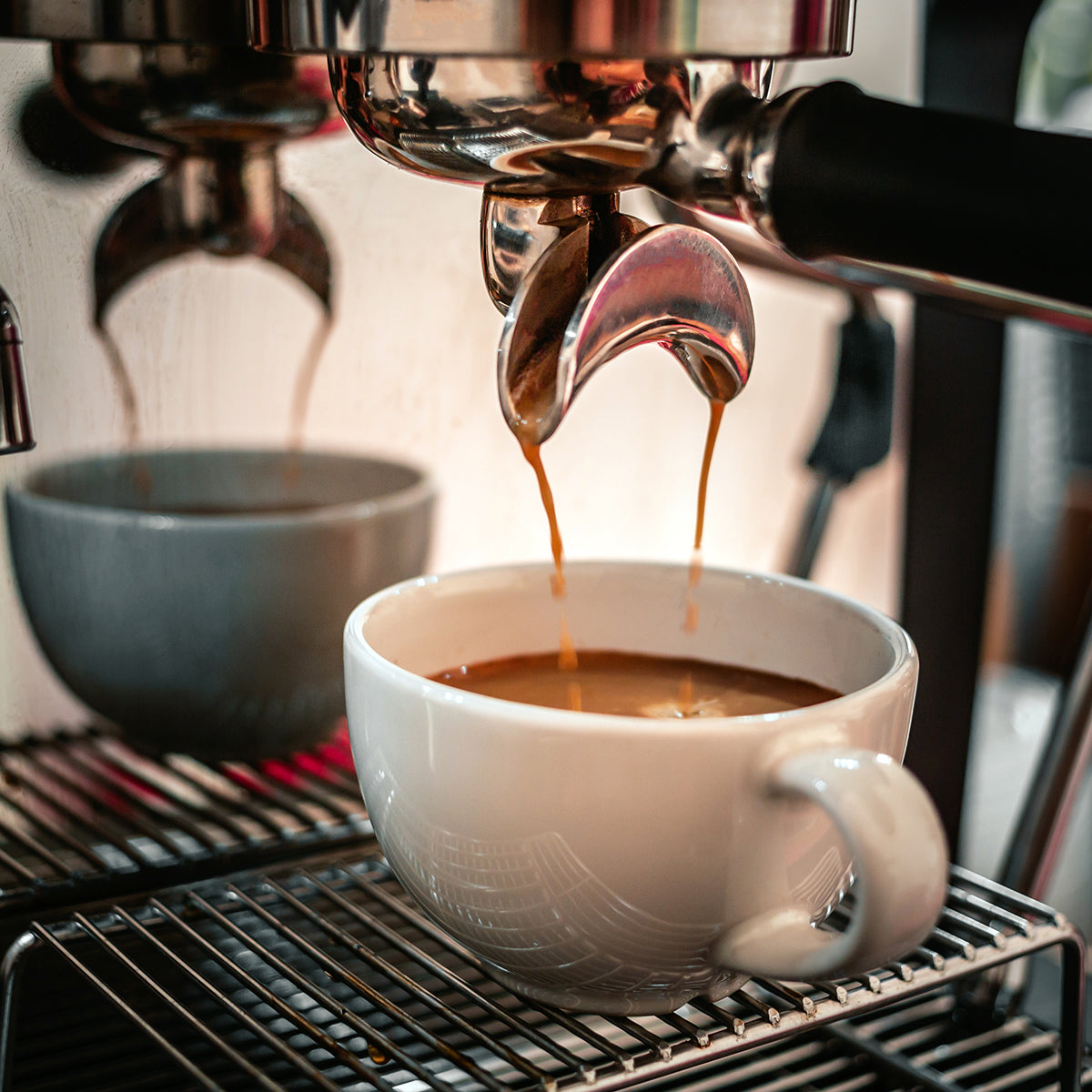
Espresso Machine
Fill porta-filter to line with espresso ground coffee. It’s important to get the precise grind to ensure maximum crema.
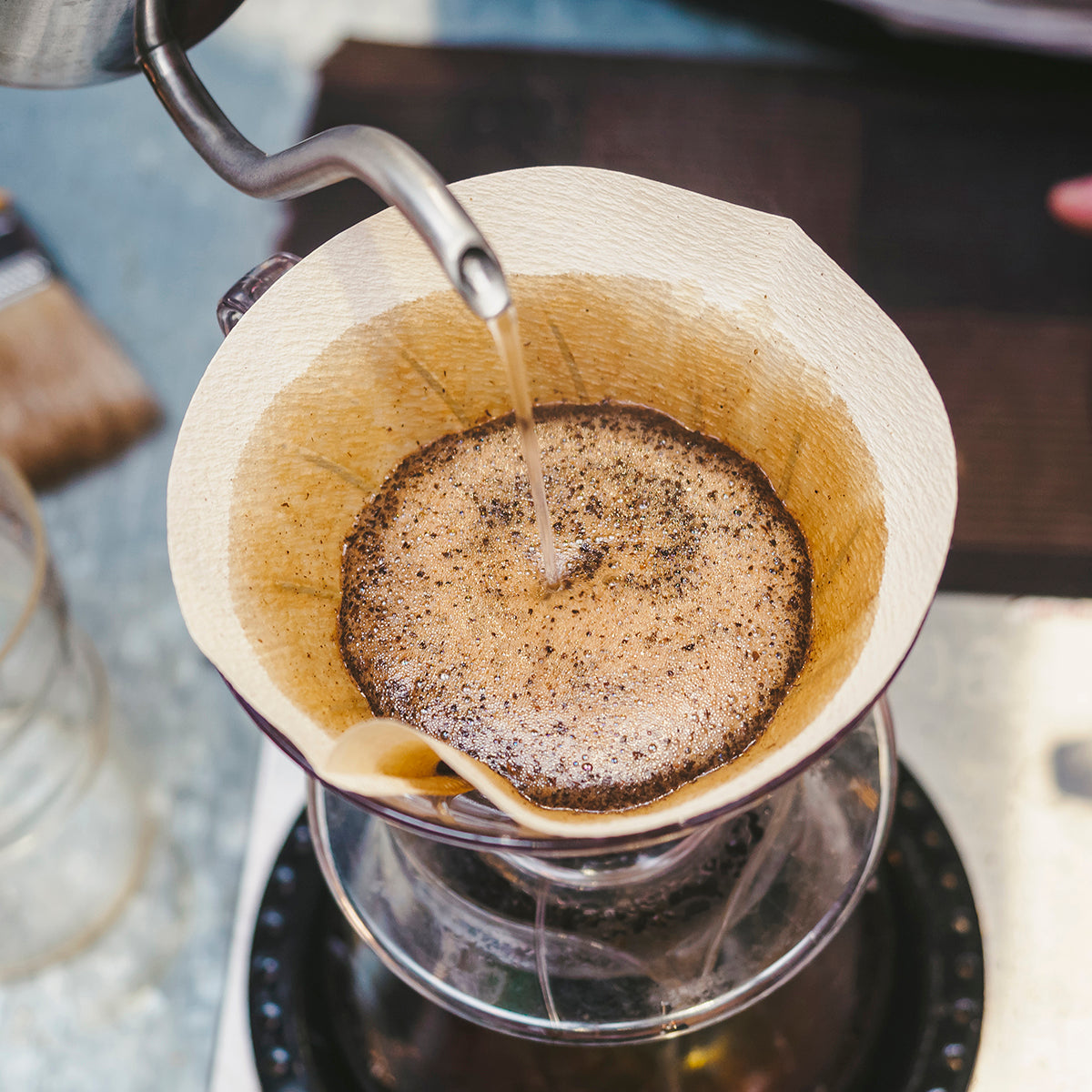
Hand Drip Method
Add 8-10 grams of medium-fine ground coffee per cup. Heat water to 190-195 degrees, (88-90.5c) pre-soak grounds, slowly add water in a clockwise motion. Adjust to taste.
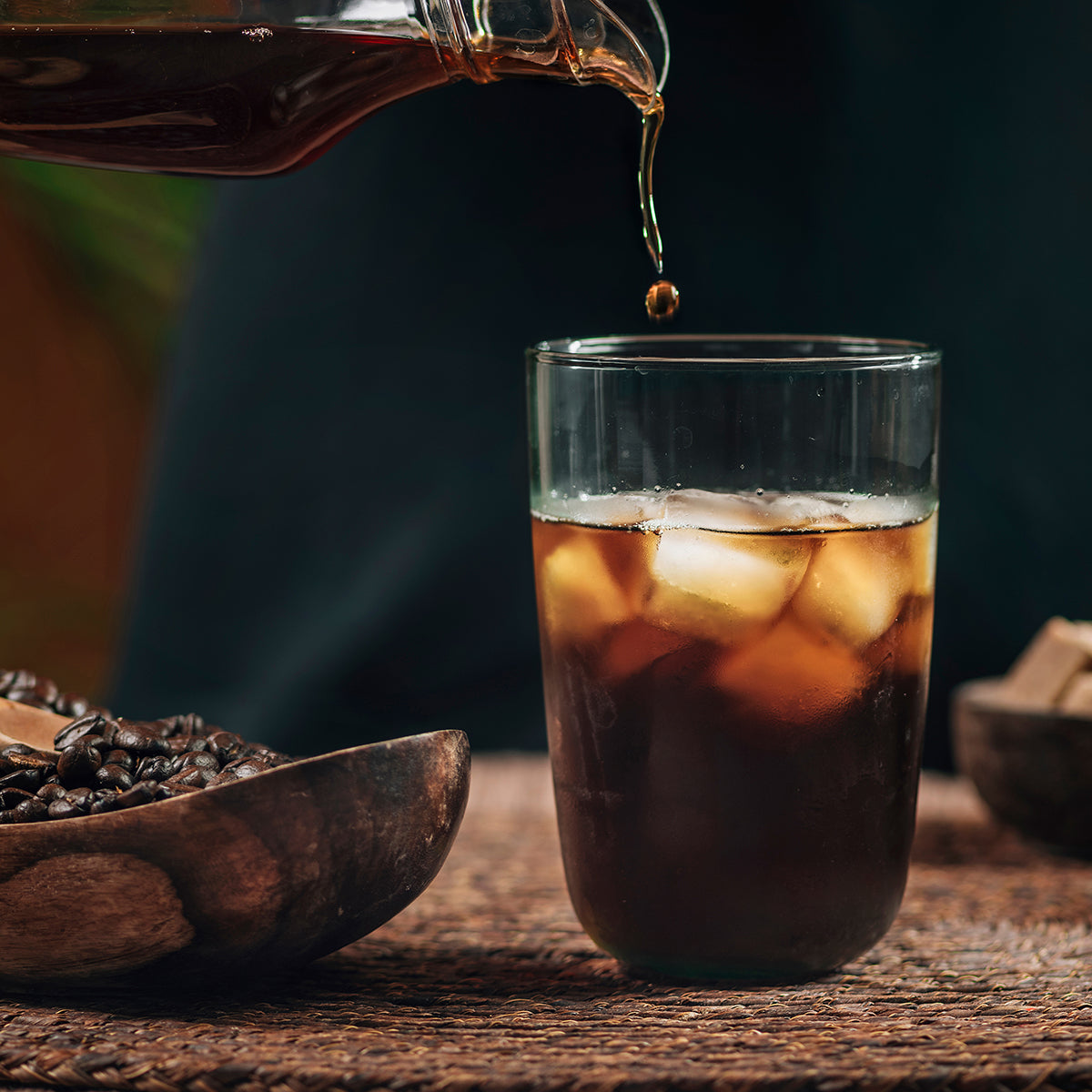
Cold Brew
Steep equal amounts of coarse ground coffee and filtered water in a covered container for 12-24 hours, strain coffee out and use cheesecloth or a paper coffee filter to remove leftover grounds. Add water to taste
More Brewing Tips
Freshness Matters
When it comes to enjoying a cup of coffee, freshness is of top importance. Roasting the coffee beans plays a huge role in the quality of your cup of coffee. After being roasted, coffee needs time to “rest.” During this time, coffee releases gases and develops the oils and aromatic compounds that rise to the top of the beans, to provide the coffee optimum flavor and aroma. We take care of this stage and package our whole beans at peak freshness. After roasting, we let our coffee rest, to package it then. It helps our Coffee stay fresher longer as a whole bean. Once you grind the beans at home, oxidation occurs and deterioration begins. We recommend fresh roasted coffee beans to be freshly ground directly before you brew; this ensures the freshest and best cup of coffee.
Roast style and strength
Do you like your coffee “strong”? In the coffee world, strong coffee doesn’t mean caffeinated or bitter coffee. The strength refers to its richness, or satisfying fullness in flavor, body, and acidity. The strengths in the coffee is reached by the brewing ratio.
The caramelization of the natural sugars in the bean: a darker roast fully caramelizes the natural sugars in the coffee bean, adding a “punch of flavor” but reducing its body and natural flavor character. A dark roast will stand up through copious amounts of cream and sweetener.
Grinding the Beans
Besides buying excellent quality coffee beans, the freshest and best way to enjoy your cup of coffee is to grind it at home, right before brewing, just before you are drinking it. It keeps the coffee compounds intact. This is crucial, it is the real secret to enhance the taste of your coffee at home. Grind size has a tremendous effect on the outcome of the brew as it determines the flow of water through the grounds. Choosing the grind size will depend on the type of brewing and the final taste you desire i.e. American, Espresso, Turkish, Classic, or Latte. The finer the grind, the larger the surface area of the coffee bean exposed. This ultimately allows greater extraction of the coffee particles such as flavor compounds and oils.
A general concept of grinding takes into consideration the length of time ground coffee is in contact with water, and the temperature and pressure they are brewed at. Exemplifying this, Espresso requires quite a fine grind; whereas, French press is partial to the other end of the spectrum, a coarse grind. The type of roast can be a variable in altering grind size as well. For example, if you are brewing with a lighter roast you could grind the beans finer, to achieve a deeper extraction.
Water is Important
Not only does water make up the major component of your average cup of coffee, but it is also the solvent responsible for extracting the soluble flavors, esters, oils, and minerals from the roasted coffee beans.
Water quality can differ greatly depending on the source. Inferior-quality water will inevitably affect the quality of your brewed cup negatively. Use fresh spring, mineral, or filtered water. Keep the water clean and pure for the tastiest brews.
Water composition is very important because the minerals in the water are essential to the extraction process while brewing. It is worth mentioning that if water is not clean, or contains intruding elements like chloride or any other, the extracting process, is disturbed directly altering the flavor of your infusion.
Water temperature to brew our specialty coffee should be between 185°F (85°C) and 195°F (91°C) for optimal extraction. Generally speaking; the lower end of this temperature spectrum works well for darker roasts while the higher end can be more efficient for lighter roasts. If you do not have a water thermometer, a practical application is to boil the water and let it stand for two minutes, or add a splash of cold water before mixing it with the grounds. Most automated or electrical coffee brewing systems will account for temperature and/or allow you to set it.
Brewing your Coffee
The brewing ratio refers to the proportion of ground coffee used about the amount of water used. This can seem confusing considering that grind size, water temperature, brew ratio, and brew time are all related to each other. To keep consistency, use a kitchen scale to measure. If you do not have a kitchen scale that’s ok, we have included conversions to common kitchen measures like tablespoons and cups.
Brewing Ratio
Brewing a Classic Drip style, for a balanced cup of coffee for most filter methods, we recommend 10 to 11 grams of coffee, or the equivalent of one slightly rounded tablespoon, per ¾ cup (6 oz) of water.
Brewing an Espresso and other styles, follow coffee machine guidelines or personal preferences. Just keep in mind that, the more you brew, the more you will hone in on the details to make the perfect cup of coffee according to your taste.
Brewing System Maintenance
With any brewing method it is important to ensure that all elements are clean and dry before use. This includes cleaning all filter baskets and carafes along with using fresh unbleached filters and clean tools.
